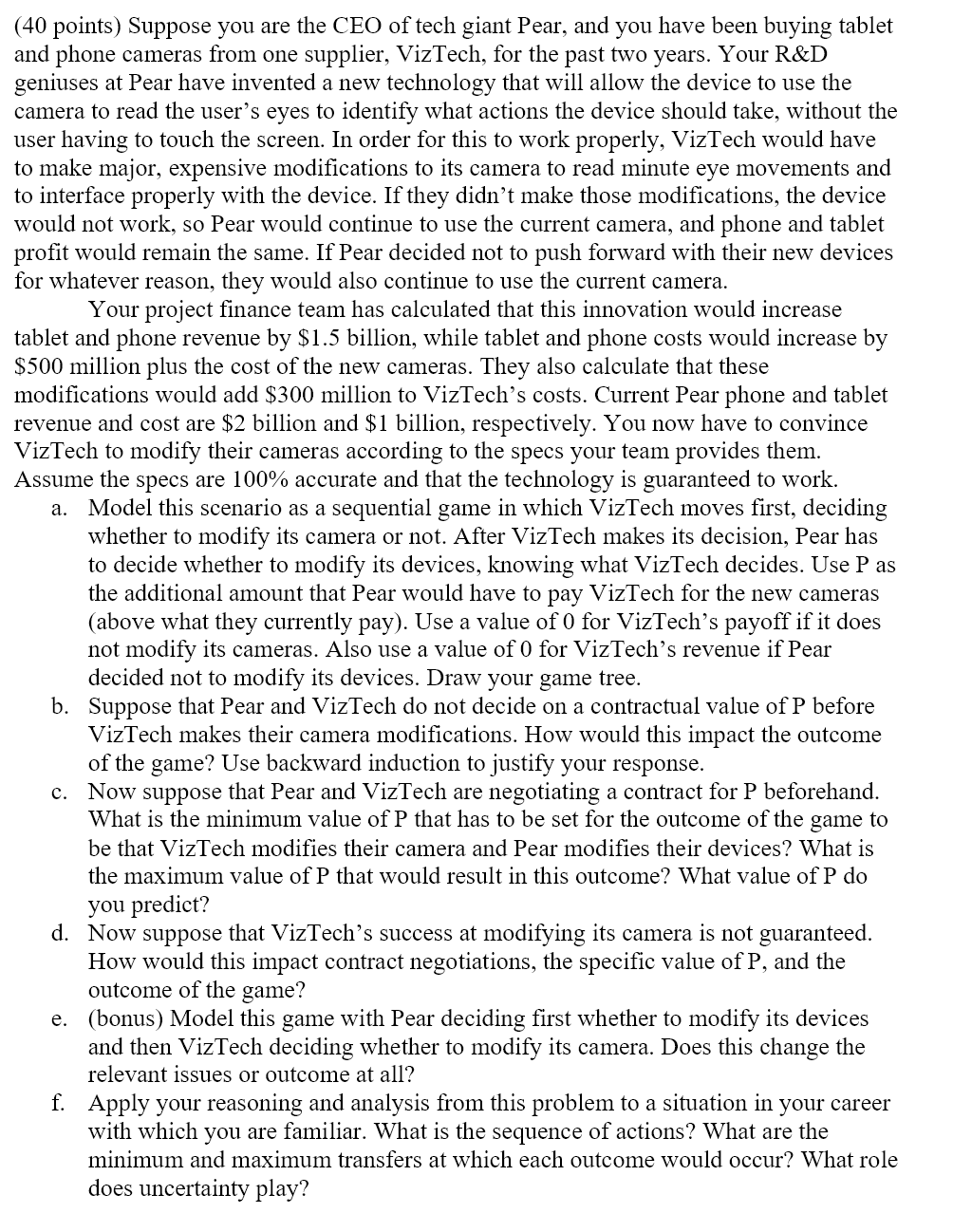
QUESTION 2 BUSI 681
(40 points) Suppose you are the CEO of tech giant Pear, and you have been buying tablet and phone cameras from one supplier, VizTech, for the past two years. Your R&D geniuses at Pear have invented a new technology that will allow the device to use the camera to read the user's eyes to identify what actions the device should take, without the user having to touch the screen. In order for this to work properly, VizTech would have to make major, expensive modications to its camera to read minute eye movements and to interface properly with the device. If they didn't make those modications, the device would not work, so Pear would continue to use the current camera, and phone and tablet prot would remain the same. If Pear decided not to push forward with their new devices for whatever reason, they would also continue to use the current camera. Your project nance team has calculated that this innovation would increase tablet and phone revenue by $1.5 billion, while tablet and phone costs would increase by $500 million plus the cost of the new cameras. They also calculate that these modications would add $300 million to VizTech's costs. Current Pear phone and tablet revenue and cost are $2 billion and $1 billion, respectively. You now have to convince VizTech to modify their cameras according to the specs your team provides them. Assume the specs are 100% accurate and that the technology is guaranteed to work. a. Model this scenario as a sequential game in which VizTech moves rst, deciding whether to modify its camera or not. After VizTech makes its decision, Pear has to decide whether to modify its devices, knowing what VizTech decides. Use P as the additional amount that Pear would have to pay VizTech for the new cameras (above what they currently pay). Use a value of 0 for VizTech's payoff if it does not modify its cameras. Also use a value of 0 for VizTech's revenue if Pear decided not to modify its devices. Draw your game tree. b. Suppose that Pear and VizTech do not decide on a contractual value of P before VizTech makes their camera modications. How would this impact the outcome of the game? Use backward induction to justify your response. c. Now suppose that Pear and VizTech are negotiating a contract for P beforehand. What is the minimum value of P that has to be set for the outcome of the game to be that VizTech modies their camera and Pear modies their devices? What is the maximum value of P that would result in this outcome? What value of P do you predict? d. Now suppose that VizTech's success at modifying its camera is not guaranteed. How would this impact contract negotiations, the specic value of P, and the outcome of the game? e. (bonus) Model this game with Pear deciding rst whether to modify its devices and then VizTech deciding whether to modify its camera. Does this change the relevant issues or outcome at all? f. Apply your reasoning and analysis from this problem to a situation in your career with which you are familiar. What is the sequence of actions? What are the minimum and maximum transfers at which each outcome would occur? What role does uncertainty play








